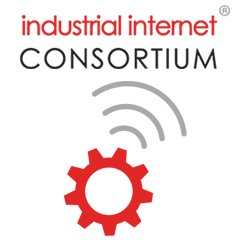The Industrial Internet Consortium (IIC) published on Tuesday initial results of its testbed program. A major focus and activity of the IIC and its members, testbeds provide platforms for IIC member organizations to think through innovations, test new applications, processes, products, services and business models to ascertain their usefulness and viability before taking them to market.
The IIC reviews testbed proposals to identify goals, value, potential partners and commercial viability of each testbed. The testbeds must offer a solid business case for global economic impact; have relevance to IIC IIoT frameworks to help members develop IIoT systems more rapidly; pass a security review to ensure a secure industrial Internet; and provide tangible deliverables such as technologies or best practices requirements for standards. There are currently 26 approved IIC testbeds.
The IIC testbeds initially formed to trace process tools, the team deployed sensors that provided information about the location of tools and assets in use. It was expanded from tools to logistics equipment, specifically forklifts. The testbed identified standardization opportunities in localization-technology interfaces, tightening-tool interfaces, enterprise-system interfaces, data models, data communications and device management. It also identified reusable interfaces that opened the solution to components from different vendors.
Time-sensitive networking (TSN) enhances Ethernet to bring more deterministic capabilities to the network, including time synchronization, which schedules traffic flows and manages central automated system configuration. This testbed applies TSN technology in a manufacturing system with a wide range of automation and control vendors.
The testbed deployed early-phase IEEE 802.1 and IEEE 802 Ethernet standards. The testbed will improve upon those standards, making the use of TSN more prevalent in industries where it can improve efficiency, such as manufacturing and energy.
This testbed will improve manufacturing quality by retrofitting outdated factories using modern sensory networks and analytic technologies. The initial success was shown using the welding section of the air conditioner production line in a factory. Prior to the process, the quality control was based on the noise detection by an experienced examiner.
In March 2017, an optimized noise detection analytic engine was proven to help reduce the false detection rate by 45 percent. In June 2017, the analytic engine for noise detection was integrated into the production line and the accuracy of pass/fail detection was dramatically improved.
A microgrid combines generation and storage into a local power system. It allows more reliable use of renewable sources like solar or wind power in conjunction with, or even isolated from, the rest of the power grid. Near-term uses are for limited areas, such as a campus, corporation, hospital, factory or residential area. Someday, the microgrid architecture will enable deeper use of renewables throughout the main grid.
This testbed proves the viability of a real-time, securely distributed control architecture for real-world microgrid applications. It leverages an Industrial Internet Reference Architecture (IIRA) pattern called the “layered databus” that federates multiple connectivity domains into a larger system. The testbed implemented the pattern with the Data Distribution Service (DDS) standard as explained in the Industrial Internet Connectivity Framework (IICF) guidance.
The testbed thus validated both the pattern and its implementation, showing both efficacy and acceleration. This testbed is also contributing to the Open Field Message Bus (OpenFMB) design, now a power industry standard.
The INternational Future INdustrial Internet TEstbed (INFINITE) uses software-defined networking to create virtual domains so that multiple virtual domains can run securely on a single physical network. This testbed enabled route planning for ambulances to improve response times, leading to better pre-hospital emergency care experiences and outcomes for patients.
It also led to the improved safety and effectiveness of first responders in emergency situations, especially in harsh environments. A third use case enabled the detection of anomalies or fraudulent behavior within the power grid through machine learning algorithms, which can also be applied to other types of Operation Technology (OT).
This testbed provides insight into the health of critical assets. It leverages advanced sensors that automatically predict equipment failure and notifies a person or system so that pro-active steps can be taken to avoid equipment damage and unscheduled downtime. This testbed demonstrated how to make older assets smart, collecting asset health data from four pump/motor skids used to pump chilled water from an HVAC system.
This testbed networks a web of smart factories to improve order fulfillment by aligning capacity across production sites. Factories and their assets can be registered and searched for in the Smart Factory Web (SFW) portal. IEC standards OPC UA and AutomationML are used to achieve semantic interoperability and are applied to exchange information between engineering tools.
“IIC testbeds provide a feedback loop from concept to reality and back to innovation,” said Dr. Richard Soley, executive director, IIC. “They help uncover the technologies, techniques and opportunities that are essential to solving important problems that benefit business and society. This is the reason member companies agree to sponsor and own their testbeds but will also share progress reports.”




